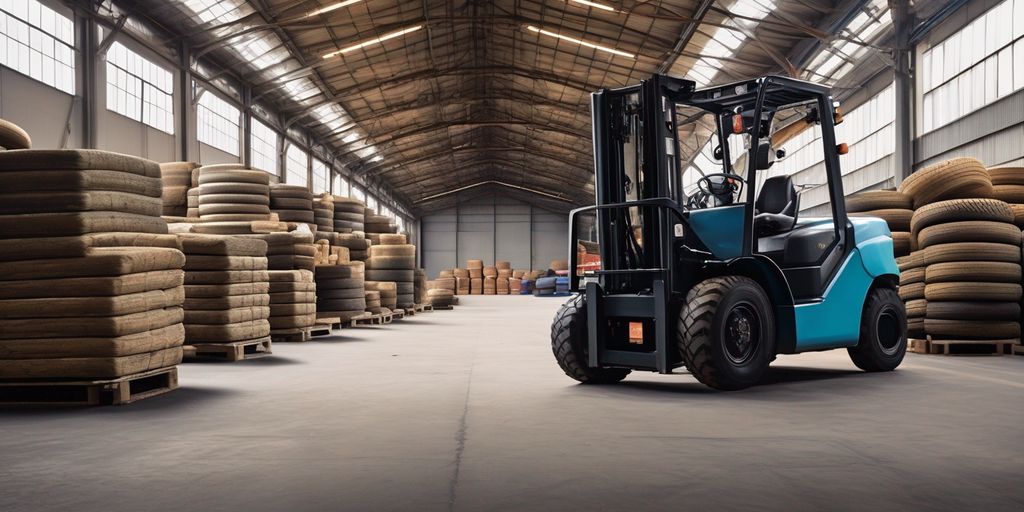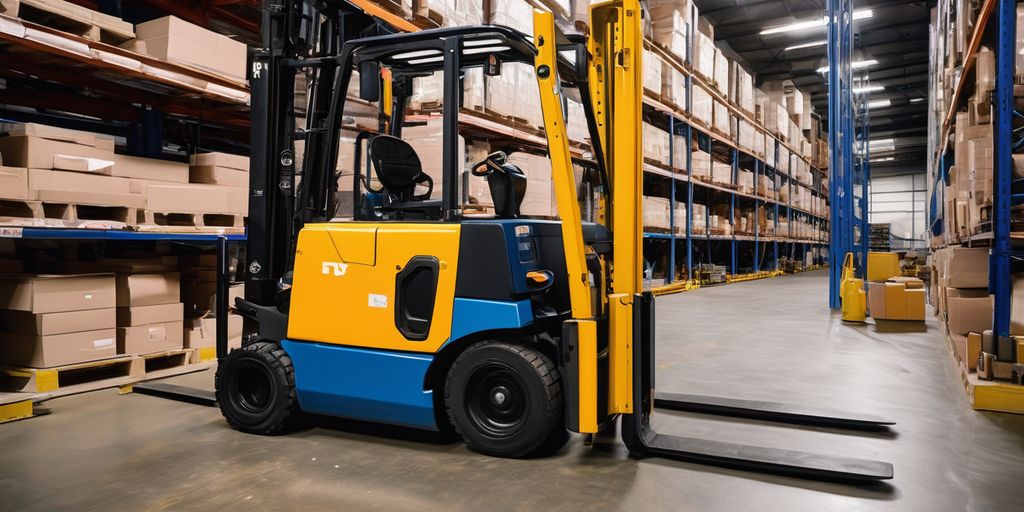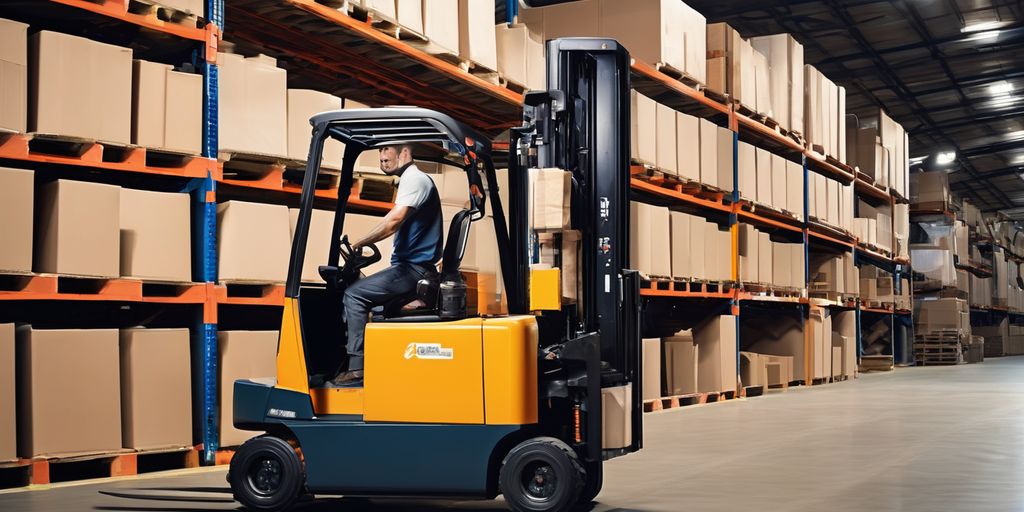Forklift Tire Selection: Choosing the Right Tires for Your Operation — overview
Selecting the right forklift tires is crucial for optimizing performance, ensuring safety, and maintaining efficiency in your operations. Different types of tires are designed for specific applications and conditions, making it essential to understand your options and the factors that influence your choice. This article will guide you through the various types of forklift tires, factors to consider when selecting them, their impact on performance and safety, and tips for maintenance and replacement.
Key Takeaways
- Understanding the different types of forklift tires, such as cushion, pneumatic, and solid tires, is essential for making an informed choice.
- Factors such as load frequency, surface conditions, and manufacturer specifications play a significant role in tire selection.
- The right forklift tires can improve operator health, prevent accidents, and enhance overall efficiency.
- Regular maintenance and timely replacement of forklift tires are crucial for optimal performance and safety.
- Avoid common mistakes like ignoring manufacturer guidelines, overlooking surface conditions, and neglecting regular maintenance.
Understanding Different Forklift Tire Types

Forklift tires come in various types, each offering unique benefits and suited to specific work environments. Typically, forklifts are designed with a particular tire in mind. Choosing the right tire can significantly impact your forklift's performance and safety.
Cushion Tires
Cushion tires are usually solid rubber pressed onto a metal band. They are ideal for smooth warehouse surfaces or light outdoor use on paved surfaces. These tires are small in circumference, offering little ground clearance but absorbing a good amount of shock and vibration, which protects the operator from harmful effects.
Pneumatic Tires
Pneumatic tires are similar to car or truck tires and are filled with air. They are suitable for rough, uneven surfaces and outdoor environments. Pneumatic tires provide better traction and a smoother ride over rough terrain, making them ideal for construction sites and lumber yards.
Solid Tires
Solid tires, also known as solid pneumatic tires, are made of solid rubber and are not filled with air. They are puncture-proof and require less maintenance than pneumatic tires. Solid tires are perfect for environments where sharp objects could cause frequent punctures, such as recycling centers or scrap yards.
Each type offers distinct advantages suited to different environments and applications.
Factors to Consider When Selecting Forklift Tires

When selecting forklift tires, several critical factors must be taken into account to ensure optimal performance and safety. Choosing the right tire can significantly impact your operation's efficiency and safety. Below are the key considerations to keep in mind:
Load and Load Frequency
The type and weight of materials moved, as well as the frequency of loads, play a crucial role in tire selection. Heavier loads and more frequent use require more durable tires to withstand the stress and wear.
Surface Conditions
Surface conditions and turning area are vital factors. Will you be traveling on rugged terrain or smooth surfaces? Different tires are designed for specific surface conditions, and selecting the wrong type can lead to reduced efficiency and increased wear.
Manufacturer Specifications
Always refer to the manufacturer's specifications when selecting tires. Forklifts are often designed for use with a certain type of tire, and using the wrong type can affect your forklift's performance and safety.
Keep all of these variables in mind when purchasing a forklift. Selecting the wrong lift truck for the application you will be using it in will affect your efficiency, safety, and output.
Impact of Forklift Tires on Performance and Safety

Forklift tires play a crucial role in the overall performance and safety of your operations. Choosing the right tire impacts the handling and safety of your forklift, ensuring that it operates efficiently and safely in various environments.
When to Replace Your Forklift Tires

Knowing when to replace your forklift tires is crucial. Neglecting this can result in reduced fuel efficiency, but more critically, it can lead to operator fatigue, increasing the risk of errors and endangering others in the vicinity. Moreover, extensive damage can also be done to your equipment if the tires aren’t replaced in time.
Maintenance Tips for Forklift Tires

Regular Inspections
Inspect tires regularly for wear and tear. Check tire wear indicators to see if it's almost time for rubber tire replacement. Inspect wheels for debris that may have accumulated such as shrink wrap. Grease joints and bearings to prevent overheating. Regular inspections are crucial to ensure that tires are in good condition and wearing evenly.
Forklift tire upkeep is important from an uptime and efficiency perspective. After all, a tire failing during a shift can lead to unplanned downtime and relatively costly emergency maintenance.
Proper Inflation
Ensure tires are inflated to the proper air pressure to maximize performance and minimize wear. Proper inflation helps in preventing uneven wear and extends the life of the tires. Maintain proper tire pressure to prevent uneven wear.
Cleaning and Storage
Clear work areas of any debris such as broken pallets or loose shrink wrap to protect vehicles and extend tire life. Store tires in a cool, dry place away from direct sunlight to prevent deterioration. Regular cleaning and proper storage can significantly enhance the longevity of your forklift tires.
Choosing the Right Tire for Specific Applications

Selecting the appropriate tire for your forklift is crucial for optimal performance and safety. Different applications require different forklifts and, therefore tire types.
Common Mistakes to Avoid in Forklift Tire Selection

Ignoring Manufacturer Guidelines
One of the most common mistakes is ignoring manufacturer guidelines. Forklifts are often designed for use with a certain type of tire, and deviating from these specifications can affect your efficiency, safety, and output. Always refer to the manufacturer's recommendations to ensure optimal performance.
Overlooking Surface Conditions
Surface conditions play a crucial role in tire selection. Failing to consider whether your forklift will be traveling on rugged terrain or smooth surfaces can lead to premature tire wear and potential safety hazards. Make sure to evaluate the type and weight of materials moved and the turning area to choose the right tire.
Neglecting Regular Maintenance
Regular maintenance is essential for forklift safety and efficiency. Many of the dangers facing forklift tires are based around not paying enough attention. For instance, a failure to check for debris being stuck to a vehicle's wheels could lead to that material causing more damage over time. Furthermore, failure to enact forklift tire replacement on time can set that lift truck up for failure.
Pro Tip: Regular inspections and timely replacements can significantly extend the life of your forklift tires and improve overall safety.
Conclusion
Selecting the right forklift tires is crucial for optimizing performance, safety, and efficiency in your operations. The type of tire you choose should align with the specific requirements of your forklift and the conditions in which it will be used. From cushion tires to pneumatic options, each type has its own set of advantages and is suited for different environments. By considering factors such as manufacturer specifications, load frequency, surface conditions, and the type of materials being moved, you can make an informed decision that will enhance the longevity and effectiveness of your forklift. Remember, the right tire not only improves operational efficiency but also contributes to the overall safety and well-being of your operators. Make sure to regularly inspect and maintain your forklift tires to ensure they remain in optimal condition, thereby minimizing downtime and maximizing productivity.
Frequently Asked Questions
What are the main types of forklift tires?
The main types of forklift tires are cushion tires, pneumatic tires, and solid tires. Each type is designed for specific applications and operational conditions.
How do I know when to replace my forklift tires?
You should replace your forklift tires when you notice signs of wear and tear, such as reduced tread depth, visible damage, or uneven wear. It's also recommended to follow the manufacturer's replacement intervals.
What factors should I consider when selecting forklift tires?
When selecting forklift tires, consider factors such as load and load frequency, surface conditions, and manufacturer specifications. These factors will help ensure optimal performance and safety.
How do forklift tires impact performance and safety?
Forklift tires impact performance by affecting the vehicle's handling and efficiency. They also play a crucial role in safety by preventing accidents and reducing operator fatigue.
Can I use the same tires for indoor and outdoor applications?
No, it's important to choose the right tires for specific applications. Indoor operations typically use cushion tires, while outdoor operations may require pneumatic or solid tires depending on the surface conditions.
What are non-marking forklift tires and when should I use them?
Non-marking forklift tires are designed to not leave marks on floors, making them ideal for indoor applications where cleanliness is important, such as in food processing or pharmaceutical facilities.




Leave a comment
This site is protected by hCaptcha and the hCaptcha Privacy Policy and Terms of Service apply.